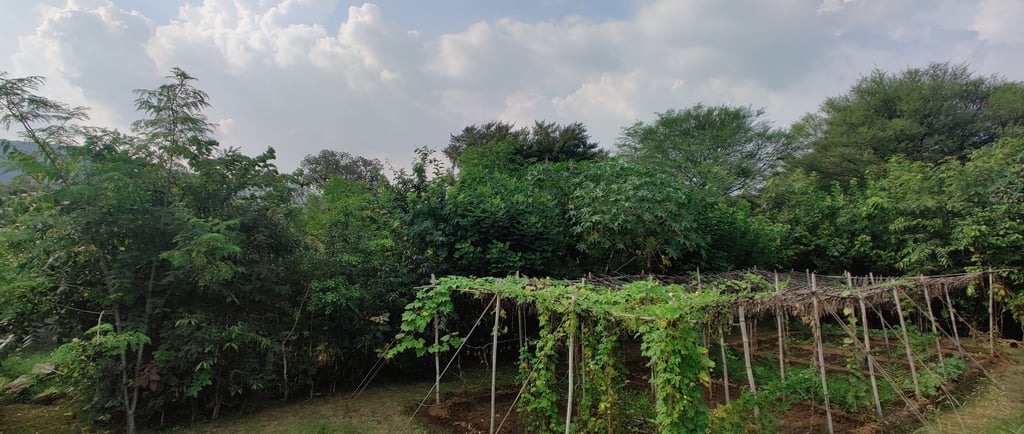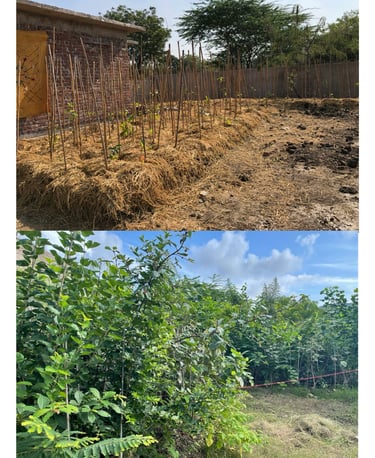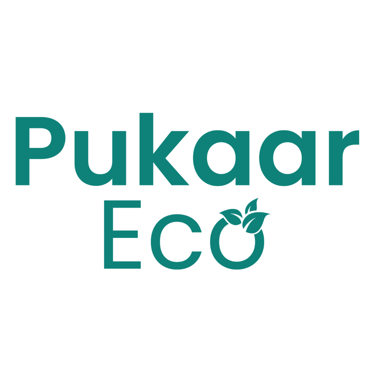How to Grow a Miyawaki Forest: Reviving Native Forests at Pukaar Eco Services, Udaipur
KNOWLEDGE
7/28/20252 min read


In the heart of Rajasthan, where arid lands meet the lush Aravalli hills, Pukaar Eco Services is transforming barren landscapes into thriving Miyawaki forests. Whether it’s a farm stay, luxury eco-resort, private villa, or a community space, the Miyawaki method offers a fast-growing, dense, and native forest in just 2-3 years.
If you’re a landowner, eco-resort planner, or agritourism entrepreneur in Udaipur or beyond, here’s how you can grow your own Miyawaki forest with the expertise of Pukaar Eco Services.
What is a Miyawaki Forest?
Developed by Japanese botanist Dr. Akira Miyawaki, this method involves planting native species densely to create self-sustaining forests in a short time. Unlike conventional plantations, Miyawaki forests are multi-layered, bio-diverse, and require minimal maintenance after 2-3 years.
Why Miyawaki Forests are Perfect for Farm Stays & Eco-Resorts in Udaipur
Revives native flora & fauna around your property.
Creates cooler microclimates and improves soil health.
Acts as a natural sound and dust barrier.
Enhances the aesthetic and ecological value of resorts & villas.
Offers experiential ecotourism — forest walks, bird watching, nature therapy.
Supports SDG Goals 13 (Climate Action), 15 (Life on Land).
Steps to Grow a Miyawaki Forest (The Pukaar Approach)
1. Site Survey & Soil Health Check
Assess soil structure, water availability, and existing ecology.
Amend soil with compost, biomass, and microbial culture to revive life.
2. Native Species Selection
Identify 50-60 native species including:
Canopy trees (Neem, Kadamba, Tamarind)
Sub-canopy trees (Ber, Kachnar)
Shrubs & understory plants (Bamboo, Giloy creepers)
Focus on indigenous species adapted to Udaipur’s climate.
3. Forest Layout & Dense Planting
Prepare the land with 1-meter-deep soil trenching.
Plant 3-5 saplings per square meter in random natural patterns.
4. Mulching & Water Management
Cover soil with organic mulch (dry leaves, wood chips).
Install drip irrigation or manual watering system for the first 2 years.
5. Maintenance for 2 Years
Regular watering, weeding, and monitoring until the forest becomes self-sustaining.
By the 3rd year, no external inputs are required.
Pukaar’s Miyawaki Projects in Udaipur
Pukaar Eco Services has successfully implemented 8 Miyawaki forests across:
Luxury farm stays and villas in Udaipur
Eco-resorts and agro-tourism destinations
Public lands and private farmhouses
These micro-forests have created oases of biodiversity, attracting birds, butterflies, and native wildlife, while enhancing the guest experience of living amidst a thriving forest.
Why Partner with Pukaar Eco Services?
12+ years of ecological design experience.
Specialized in Miyawaki plantations for farm stays, eco-resorts, and agro-tourism projects.
Complete end-to-end service: design, execution, maintenance training.
Expertise in integrating Miyawaki forests with permaculture designs, water harvesting systems, and soil regeneration techniques.
Ready to Grow a Forest on Your Land?
If you own a resort, farm stay, villa, or farmland in Udaipur or Rajasthan, a Miyawaki forest can transform your property into a living ecosystem. Let’s grow a self-sustaining native forest that revives nature and elevates guest experiences.
Contact Pukaar Eco Services for a site visit and custom Miyawaki forest plan.


